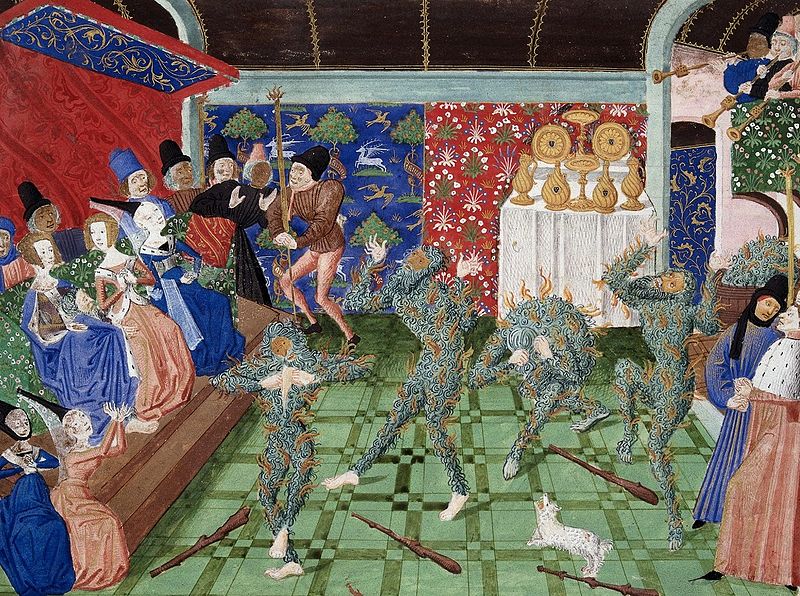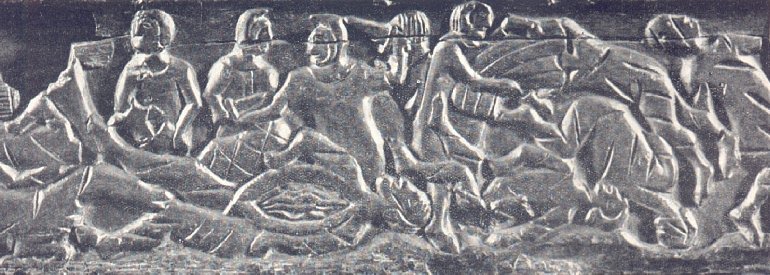
Book 2 in the Christine de Pizan mysteries - following directly on from "In the Presence of Evil".
"... Brother Michel will record what everyone believes .."
This series, set in France in the 1390s during the reign of mad King Charles VI, features recently widowed Christine de Pizan who is employed as a scribe for the French Queen, Isabeau of Bavaria. The French Court in this period was a hot-bed of political and sexual intrigue, with the various factions fighting for control of both the government and the King (think Wars of the Roses). For those unfamiliar with the period, Christine de Pizan was actually a court writer during the reign of Charles VI, and was indeed patronised by both the Queen, Isabeau of Bavaria, and the king's brother, Louis, Duke of Orleans.
Christine's father Thomas worked as a physician, court astrologer and councillor of the Republic of Venice. Thomas de Pizan accepted an appointment to the court of Charles V of France as the king's astrologer and moved to Paris (1368). Christine de Pizan married the notary and royal secretary Etienne du Castel (c.1379). Pizan's husband died of the plague (1389), her father had died the year before. Pizan was left to support her mother and her children. When she tried to collect money from her husband's estate, she faced complicated lawsuits regarding the recovery of salary due her husband. In order to support herself and her family Christine turned to writing - hence her duties for the French court.
 The Shadow of the Enemy directly follows on from In The Presence of Evil - in fact, for the characters, the events are imprinted on their memories so much so this forms one of the main plots. Christine is asked by Queen Isabeau to investigate the incident that would become known as the Bal des Ardents ("Ball of the Burning Men") as she feels that the threat to Charles is to be found closer than she would like.
The Shadow of the Enemy directly follows on from In The Presence of Evil - in fact, for the characters, the events are imprinted on their memories so much so this forms one of the main plots. Christine is asked by Queen Isabeau to investigate the incident that would become known as the Bal des Ardents ("Ball of the Burning Men") as she feels that the threat to Charles is to be found closer than she would like. This famous incident in French history occurred on 29th January 1393. A masked ball had been organized by the Queen, Isabeau of Bavaria, to celebrate the wedding of one of her ladies-in-waiting at the Hôtel Saint-Pol. At the suggestion of Huguet de Guisay, the king and four other lords dressed up as wild men and danced about. They were dressed "in costumes of linen cloth sewn onto their bodies and soaked in resinous wax or pitch to hold a covering of frazzled hemp, so that they appeared shaggy & hairy from head to foot". At the suggestion of one Yvain de Foix, the king commanded that the torch-bearers were to stand at the side of the room. Nonetheless, the king's brother Louis I, Duke of Orléans, who had arrived late, approached with a lighted torch in order to discover the identity of the masqueraders, and he set one of them on fire. There was panic as the fire spread. The Duchess of Berry threw the train of her gown over the king. Several knights who tried to put out the flames were severely burned. Four of the wild men perished: Charles de Poitiers, son of the Count of Valentinois; Huguet de Guisay; Yvain de Foix; and the Count of Joigny. Another – Jean, son of the Lord of Nantouillet – saved himself by jumping into a dishwater tub.
Add to this another subplot based upon previous events in both French history and in Charles' life - the battle of the Golden Spurs - and its horrific aftermath. The Battle of the Golden Spurs (also known as the Battle of Courtrai), was fought between the Kingdom of France and the County of Flanders at Courtrai (Kortrijk ) on 11th July 1302. The Flemish were in rebellion against the French and massacred the French of the city of Bruges. The King of France at the time, Philip IV, organised an enormous army to march against the Flemish and seek retribution. The result was a rout of the French nobles, who suffered heavy losses at the hands of the Flemish. The battle soon became known as the Battle of the Golden Spurs after the 500 pairs of spurs that were captured in the battle and offered at the nearby Church of Our Lady. After the Battle of Roosebeke (27th November 1382), the spurs were taken back by the French and Courtai (Kortrijk) was viciously sacked by Charles VI in retaliation. As this event is featured at the start of the novel, we are left wondering how it will be linked to Christine.
 Throughout In The Shadow of the Enemy we get more of a feel for Christine's work as a writer at the royal court which is really just starting for the purposes of the novel. Christine wrote a number of books of advice to princesses, princes and knights remained in print until the 16th century. And our story is littered with references to this. In fact, this may be a homage to The Good Wife's Guide (Le Ménagier de Paris): A Medieval Household Book. Written in the late 14th C by an anonymous French writer, the book is addressed to a fifteen-year-old bride, narrated in the voice of her husband, a wealthy, aging Parisian. The book was designed to teach this young wife the moral attributes, duties, and conduct befitting a woman of her station in society, in the almost certain event of her widowhood and subsequent remarriage. The work also provides a rich assembly of practical materials for the wife's use and for her household, including treatises on gardening and shopping, tips on choosing servants, directions on the medical care of horses and the training of hawks, plus menus for elaborate feasts, and more than 380 recipes. I like how author Tanya Bayard as attributed this to Christine and leaves us wondering how this book is linked to Christine's search for Martin de Bois, the missing husband of Klara, a young bride taken in by Christine's mother.
Throughout In The Shadow of the Enemy we get more of a feel for Christine's work as a writer at the royal court which is really just starting for the purposes of the novel. Christine wrote a number of books of advice to princesses, princes and knights remained in print until the 16th century. And our story is littered with references to this. In fact, this may be a homage to The Good Wife's Guide (Le Ménagier de Paris): A Medieval Household Book. Written in the late 14th C by an anonymous French writer, the book is addressed to a fifteen-year-old bride, narrated in the voice of her husband, a wealthy, aging Parisian. The book was designed to teach this young wife the moral attributes, duties, and conduct befitting a woman of her station in society, in the almost certain event of her widowhood and subsequent remarriage. The work also provides a rich assembly of practical materials for the wife's use and for her household, including treatises on gardening and shopping, tips on choosing servants, directions on the medical care of horses and the training of hawks, plus menus for elaborate feasts, and more than 380 recipes. I like how author Tanya Bayard as attributed this to Christine and leaves us wondering how this book is linked to Christine's search for Martin de Bois, the missing husband of Klara, a young bride taken in by Christine's mother.
Christine, who grew up at the Court but is now not of the court, uses her skills and connections as well as relying on others outside of the court, to solve the mysteries at hand. I like the characters of both Marion (the prostitute) and Alips (the Queen's dwarf) and the roles assigned to both, and how the characters, including Henri Le Picart, are a little more developed. This is a much more rounded story - we get a definite feel for the political machinations of the time when not only the king's uncles, but his wife and his brother are all vying for power and control, and those in positions of power struggle to retain what they consider theirs by right. It is not until we near the end that we get just the merest hint of the shadow in question that is being cast across the king and court, and yet we are never quite sure who is involved.
An enjoyable read - and I love the fact that this series is set at the French Court rather than the English. Another historical mystery solved with a new twist added ... can't wait for the next in the series.


No comments:
Post a Comment